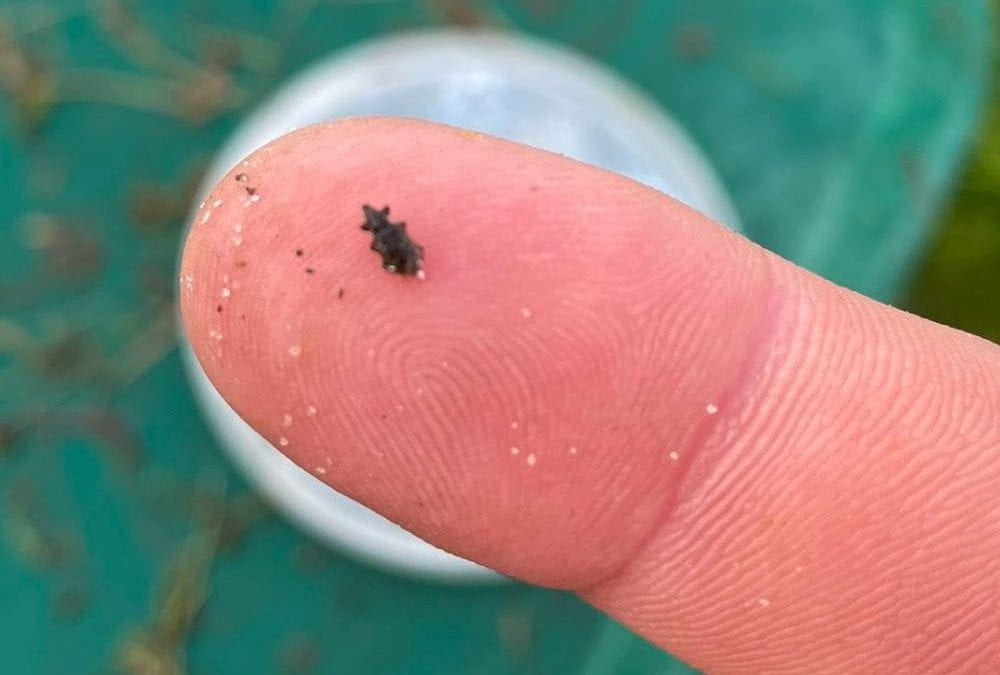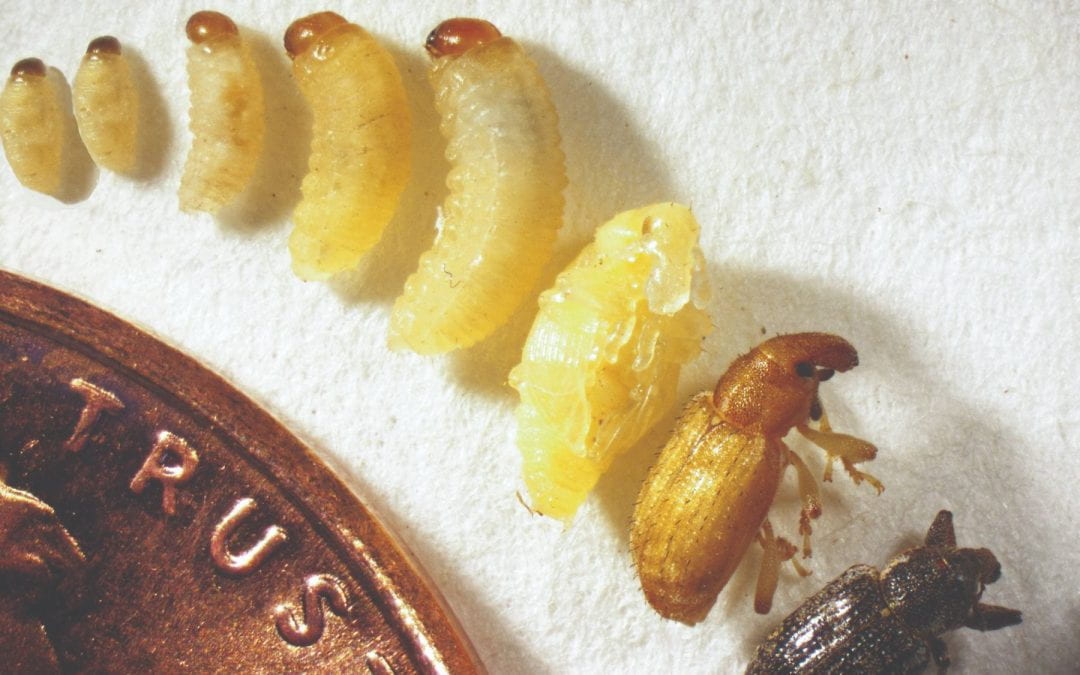
ABWs – Just a little patience
Weevils remain elusive in western and central Pennsylvania largely in part to the extended cold weather. Growing degree day (GDD) accumulations nearly stalled in early April and only 6 GDDs were accumulated in Pittsburgh last week (the week ending on Sunday, April 10). This brings us to a total of 72 for the season. These trends were consistent with what was observed in central Ohio (92 GDD on April 7) and central Pennsylvania (60-70 GDD).
April 11 to 15 looks to be the best period for getting out and scouting for weevils. Thus far, adults have been detected mainly in rough-mown areas and native surrounds off of fairways, though we have collected a small number on tee boxes, collars and greens that are directly bordering an overwintering habitat. It seems likely that the couple of warm days in early- and mid-March forced some of the early migrants out of their hiding spots towards the short turf, but the extended cold period made it impossible for those weevils to move further during the last 3 to 4 weeks.
The first application of the year (Stage 1 – Scimitar® GC insecticide) still is a week or two away. The week of April 18 looks like we are moving back into the cold too. Therefore, it is more likely that our sites won’t reach peak until the week of April 25. Unfortunately, it seems as though many people are thinking that the week of April 11 is the week for the adulticide spray…. or in some instances, time for their second spray! I know it can be difficult to be patient with this application especially after we have had 70°+ days in March, but it will be to your benefit to keep holding off until the entire overwintering population emerges and can be targeted on the short turf.
Although the adulticide spray is called a preventive spray (because it prevents egg laying) this is truly a curative approach against the adults. To be successful with this application, you need to target the exact location of most overwintering adults during the migration because traditional adulticides (organophosphates, pyrethroids) have short residual activity (measured in days). Studies conducted in our lab have suggested that control is dramatically reduced after 24-72 hours, meaning that your best bet is to have a direct hit, rather than hoping an insect walks across the residue within a couple of days.
Forsythia remains one of the best and easiest means for determining when to make an adulticide application. I would recommend that you wait at least until half green, half gold Forsythia (and maybe a little longer) to make this application. Our GDD models have worked well in predicting adult peak between Pittsburgh and Harrisburg in the past, but these models have not been validated in the greater region and GDD estimates can vary greatly based on how the data is collected (we use Spectrum Technologies WatchDog stations, base 50° F, March 1 start date). The “magic number” I look for is on average 150 GDDs, with a range of 125 and 175. Given that we are only at 72 GDD in Pittsburgh on Monday, April 11 this would take a considerable amount of very warm days to move us in that direction. So, please be patient and keep scouting!

